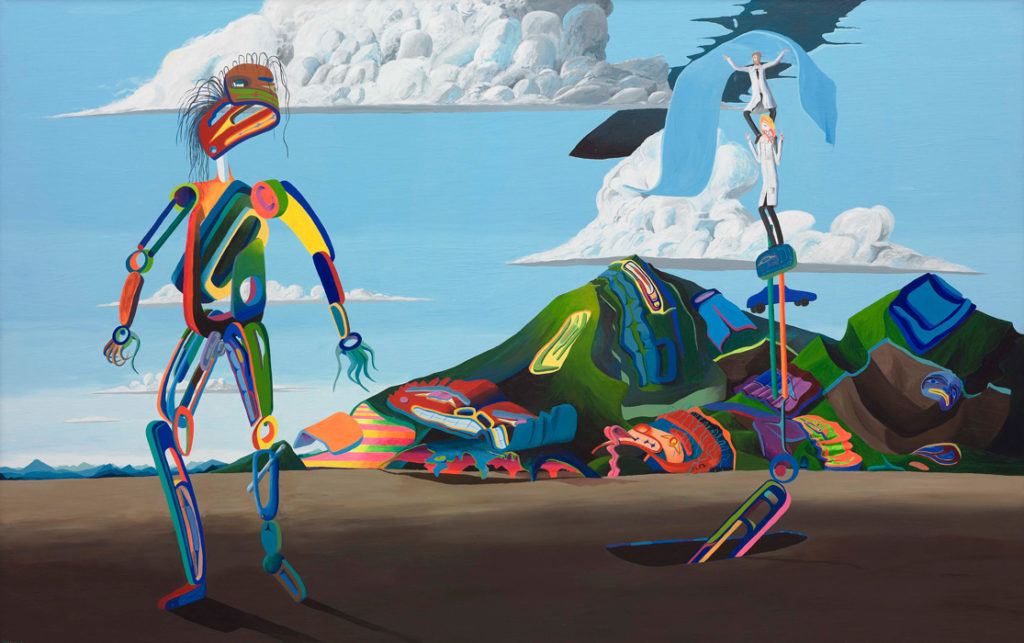In 2010, the National Gallery of Canada resuscitated its defunct biennial of Canadian art with a twist that linked it to recent acquisitions. Prior to this, biennials had been a regular occurrence at the gallery until the late 1960s when emphasis shifted to more focused solo and group exhibitions. In the mid 1980s, curators Diana Nemiroff and Jessica Bradley were inspired to revisit the idea of a biennial while travelling the country doing research for their landmark 1986 exhibition “Songs of Experience.” Three years later, in 1989, the gallery presented the “Canadian Biennial of Contemporary Art,” an exhibition that did not live up to its title, being the first and last of its kind presented at NGC for some 20 years. While I was working at the Ottawa Art Gallery between 2001 and 2008, there was a general feeling in the local community that NGC was not properly representing the scope and diversity of contemporary Canadian art; a new biennial was sometimes put forward as a way to address this weakness.
“Shine a Light: Canadian Biennial 2014” is the third iteration of NGC’s most recent adaptation of the elusive Canadian biennial of contemporary art. Without a doubt, it features some exceptional work, although some of it isn’t quite recent enough to be called contemporary. Nonetheless, it is difficult to be disappointed with an exhibition that begins, if entering on the lower level, with Lawrence Paul Yuxweluptun’s iconic Red Man Watching White Man Trying to Fix Hole in the Sky (1990)—a brilliant political satire exemplifying the artist’s signature “Ovoidism,” a blend of Northwest Coast formline and pop-surrealist aesthetics—and then leads into Geoffrey Farmer’s Leaves of Grass (2012), a reiteration of the impressive installation he created for Documenta 13, in which some 22,000 images cut from the pages of Life magazine are glued to stalks of miscanthus grass and organized chronologically, like thousands of puppets waiting to perform the drama of late-20th-century material culture and social history.
In addition to these and other impressive solo acts, the biennial also includes several well-curated thematic groupings. “Sublime Disruptions,” for instance, combines Edward Burtynsky’s unnervingly seductive images of man-made environmental devastation with David McMillan’s haunting photos of the Chernobyl exclusion zone and Isabelle Hayeur’s Underworlds (2008–2014), a series of underwater portraits of some of the world’s most polluted lakes and rivers. Another gallery explores legacies of formalist abstraction and post-minimalism in the work of artists David Armstrong Six, Tammi Campbell, Stéphane La Rue, An Te Liu and Damian Moppett.
Of the many excellent works on display, my personal favourite is David Hartt’s Stray Light (2011), a series of photographs and a video made in what was then the Chicago headquarters of Johnson Publishing Company, which is famous for publishing Ebony magazine, one of the oldest and most successful African American magazines. (After selling its iconic building, the company moved to a different location five blocks north in 2012.) A set of beautifully composed images captures the architectural style and décor of the company’s historic offices, whose aesthetic might best be described as high-tech architecture meets Afro-funk, while a video shows employees peacefully going about their business. Together they eloquently foreground the politics of race that suffuses the built environment, while also quietly reframing the supposed “neutrality” of traditional modernist space as a tacit expression of white power.
While “Shine a Light: Canadian Biennial 2014” certainly highlights NGC’s robust contemporary acquisitions programme, as a biennial it is, as usual, disappointing. Limiting curators to recent acquisitions might make sense from an administrative perspective, but it makes “taking the pulse” of Canadian contemporary artistic production utterly impossible, because anything that won’t fit in the gallery’s vaults is necessarily excluded. This means, for example, performance art, which is glaringly absent from the biennial (with the exception, I suppose, of Geoffrey Farmer’s studio workers and volunteers diligently gluing magazine images to stalks of grass). Also excluded are site-specific installations; temporal works or works that eventually cease to exist; projects that engage local communities or foster collaboration and cultural exchange; spontaneous happenings or more organized experiments in relational aesthetics; interventions into the mediascape; art that harnesses social media or exists only online…in short, some of the most exciting work currently being produced in Canada.
A decent biennial also usually tries to be part of the city in which it takes place. For example, the Biennale de Montréal, which also opened this fall, has partnered with numerous Montreal galleries, artist-run-spaces, universities and other organizations, and it also includes an impressive roster of performances, special talks, panel discussions and other presentations. In contrast, the “Canadian Biennial” is an island unto itself. As a final indignity, it isn’t even the main attraction at NGC, instead playing second fiddle to director Marc Mayer’s Jack Bush exhibition.
I am not the first person to note such shortcomings. Unless something drastic happens in the next two years, I probably won’t be the last. In the meantime, we must content ourselves with a nice show of recent acquisitions that happens every two years. A real biennial of Canadian contemporary art remains to be seen.









